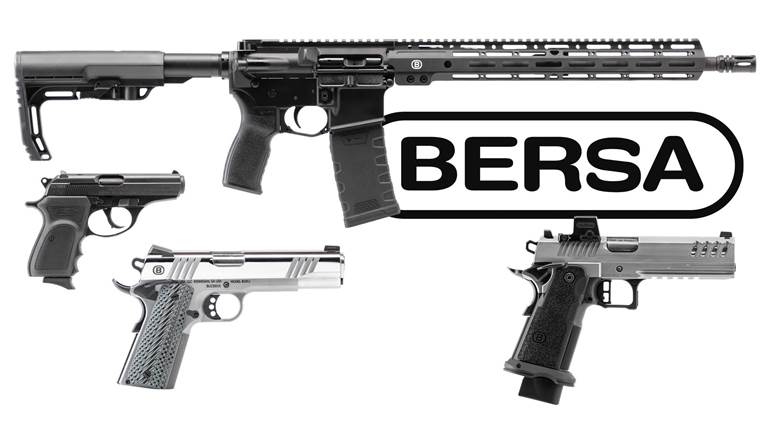
Although Glocks are perfectly serviceable and well-proven pistols as they come from the factory, they also enjoy one of the largest and most vibrant aftermarkets of any commercial firearm. In this regard, Glock pistols rival even the AR-15 and Ruger 10/22, with customization options that enhance performance and personalization. I had a 9 mm Glock 19 Gen4 ripe for upgrade. Here are some products I chose to suit my needs.
 One of the very first steps most Glock shooters take is upgrading the sights. It’s a pretty straight forward process, though it does require a Glock-specific front sight tool—the front post nests into an oval cut on top of the slide and is secured with a hexagonal nut. To replace the plastic factory sights, I chose the AmeriGlo Combative Applications Pistol (CAP) Sights for their steel construction, tritium-powered illumination and the bold, square-shaped front “bead” (ameriglo.com, $90). The luminescent square fits nicely into the rear notch when correctly aligned, and I find the whole arrangement is faster to employ than comparable three-dot patterns.
One of the very first steps most Glock shooters take is upgrading the sights. It’s a pretty straight forward process, though it does require a Glock-specific front sight tool—the front post nests into an oval cut on top of the slide and is secured with a hexagonal nut. To replace the plastic factory sights, I chose the AmeriGlo Combative Applications Pistol (CAP) Sights for their steel construction, tritium-powered illumination and the bold, square-shaped front “bead” (ameriglo.com, $90). The luminescent square fits nicely into the rear notch when correctly aligned, and I find the whole arrangement is faster to employ than comparable three-dot patterns.
 Another oft-replaced component is the Glock’s factory trigger. Here, again, it is a mostly plastic apparatus, and the design does not optimize the trigger shoe’s surface area for sure engagement with the shooter’s finger. I found a more comfortable, and customizable, unit in the form of Apex Tactical Specialties’ Action Enhancement Trigger (apextactical.com, $100). The trigger and Gen3 trigger bar comprise a drop-in replacement assembly that smoothes and reduces the trigger’s travel, improves the break and, thanks to the shoe’s semi-flat face, improves the overall feel—at least in my opinion. For a more personalized look, the trigger is available in black, red or purple, or in the Thin Blue Line color scheme that pairs a black trigger shoe with a blue anodized safety lever. Going a step further, I also replaced the safety plunger and connector with Apex products—all aforementioned parts are included in the Action Enhancement Kit ($130)—which further smoothed the trigger’s movement and reduced the pull weight from 6 lbs., 3 ozs., to 4 lbs., 11 ozs.
Another oft-replaced component is the Glock’s factory trigger. Here, again, it is a mostly plastic apparatus, and the design does not optimize the trigger shoe’s surface area for sure engagement with the shooter’s finger. I found a more comfortable, and customizable, unit in the form of Apex Tactical Specialties’ Action Enhancement Trigger (apextactical.com, $100). The trigger and Gen3 trigger bar comprise a drop-in replacement assembly that smoothes and reduces the trigger’s travel, improves the break and, thanks to the shoe’s semi-flat face, improves the overall feel—at least in my opinion. For a more personalized look, the trigger is available in black, red or purple, or in the Thin Blue Line color scheme that pairs a black trigger shoe with a blue anodized safety lever. Going a step further, I also replaced the safety plunger and connector with Apex products—all aforementioned parts are included in the Action Enhancement Kit ($130)—which further smoothed the trigger’s movement and reduced the pull weight from 6 lbs., 3 ozs., to 4 lbs., 11 ozs.
Finally, I opted to try out the Glock Striker Control Device (SCD) from Tau Development Group, familiarly called “the Gadget” (taudevgroup.com, $79). The slide cover plate replacement is intended to enhance safety, especially during holstering, and the manual of arms is similar to that of a hammer-fired double-action firearm—downward pressure on a dropped hammer will resist pressure on the trigger. In the case of the SCD, pressure on the slide plate resists the rearward movement of the striker and, through the trigger bar, the trigger itself. In this way, the SCD is first a tactile and visual indicator—trigger movement causes the SCD to fan outward—and, when pressure is applied, it can serve as a manual safety. While it in no way replaces situational awareness or safe gun handling, it does provide an extra layer of protection against unseen obstructions like shirts, jackets or spent brass that can invade the trigger guard area during the holstering motion.
Because of its no-nonsense design, business-like appearance and large-scale production, it’s understandable that a stock Glock may seem to lack character or distinction. Nevertheless, I’ve found that I can improve performance and add a bit of style.





































